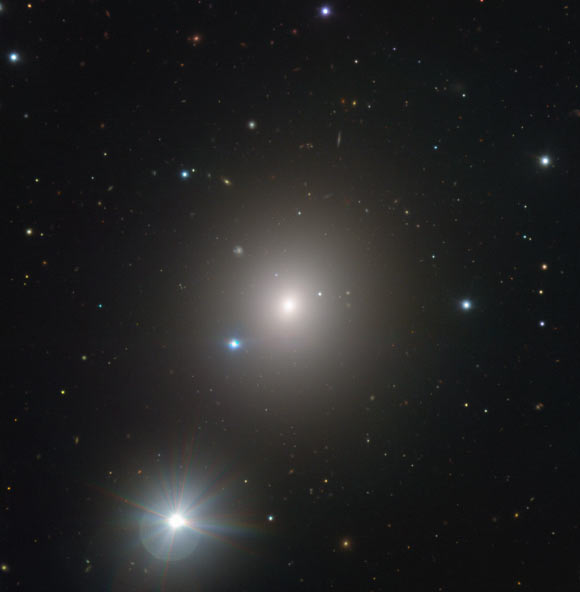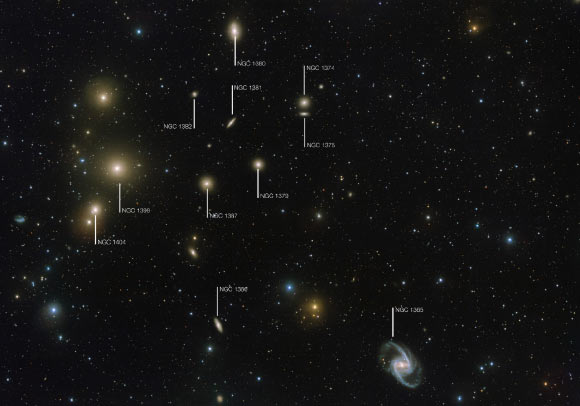ESO Releases Stunning Image of Elliptical Galaxy NGC 1404 | Astronomy – Sci-News.com
The European Southern Observatory (ESO) has released a gorgeous new image taken by ESO’s Very Large Telescope (VLT) of a giant elliptical galaxy called NGC 1404.

ESO’s Very Large Telescope captured this image of NGC 1404 with its FORS (FOcal Reducer and low dispersion Spectrograph) instrument; the bright foreground star to the lower left of the frame is named HD 22862. Image credit: ESO.
NGC 1404 is located 62 million light-years away in the southern hemisphere constellation of Eridanus.
Otherwise known as LEDA 13433 or ESO 358-46, the galaxy is one of the brightest members of the Fornax Cluster, a massive group of about 60 large galaxies and a similar number of dwarf galaxies.
Astronomers found that NGC 1404 and several other galaxies on the outskirts of the cluster are on a collision course with the core of the cluster.
The motions of this infalling group and the cluster’s core indicate that they lie along a large, unseen, filamentary structure composed mostly of dark matter that is collapsing and flowing toward a common center of gravity.
Over the course of hundreds of millions of years, NGC 1404’s orbit will take it through the cluster core several times, most of the gas it contains will be stripped away, and the formation of new stars will cease. In contrast, galaxies that remain outside the core will retain their gas, and new stars can continue to form.

This image shows the Fornax Galaxy Cluster. The brightest galaxies are labeled. Image credit: ESO / Aniello Grado / Luca Limatola.
“As NGC 1404 moves towards NGC 1399, the central galaxy of the Fornax Cluster, its reserves of hot gas are being forcibly ripped and stripped away, leaving an elongated tell-tale trail of gas in its wake,” the ESO astronomers said.
“While not visible in this image, this gas stream can be seen clearly in X-ray images of the galaxy.”
“In time, NGC 1404 will lose most of its hot gas, and therefore its ability to form new stars.”






